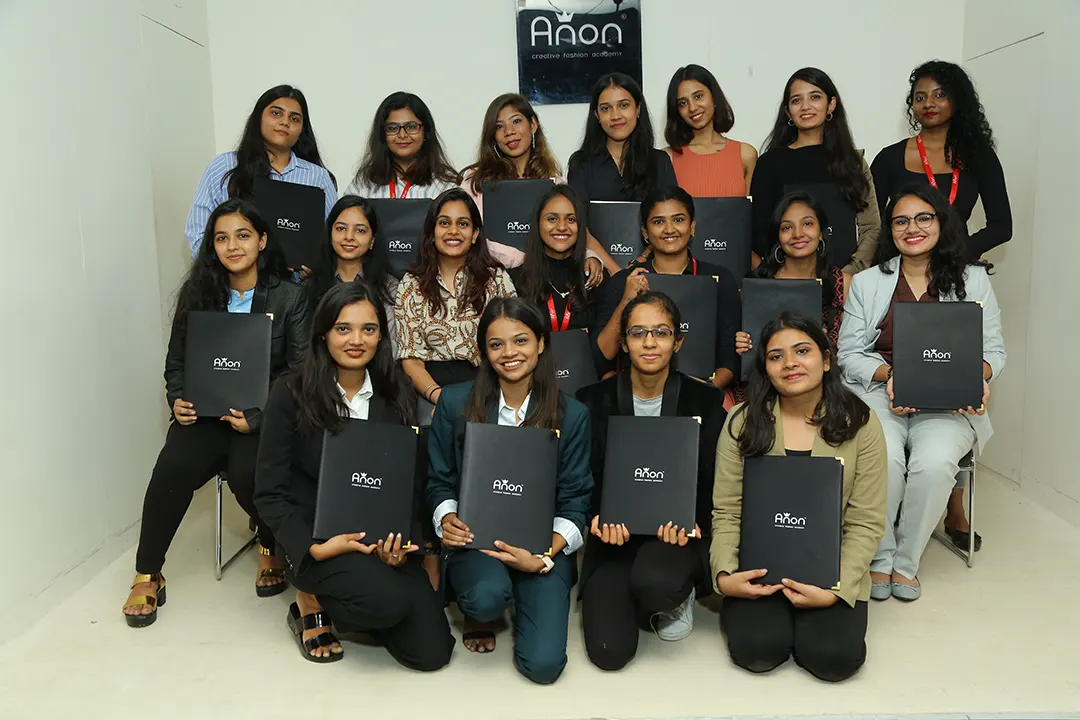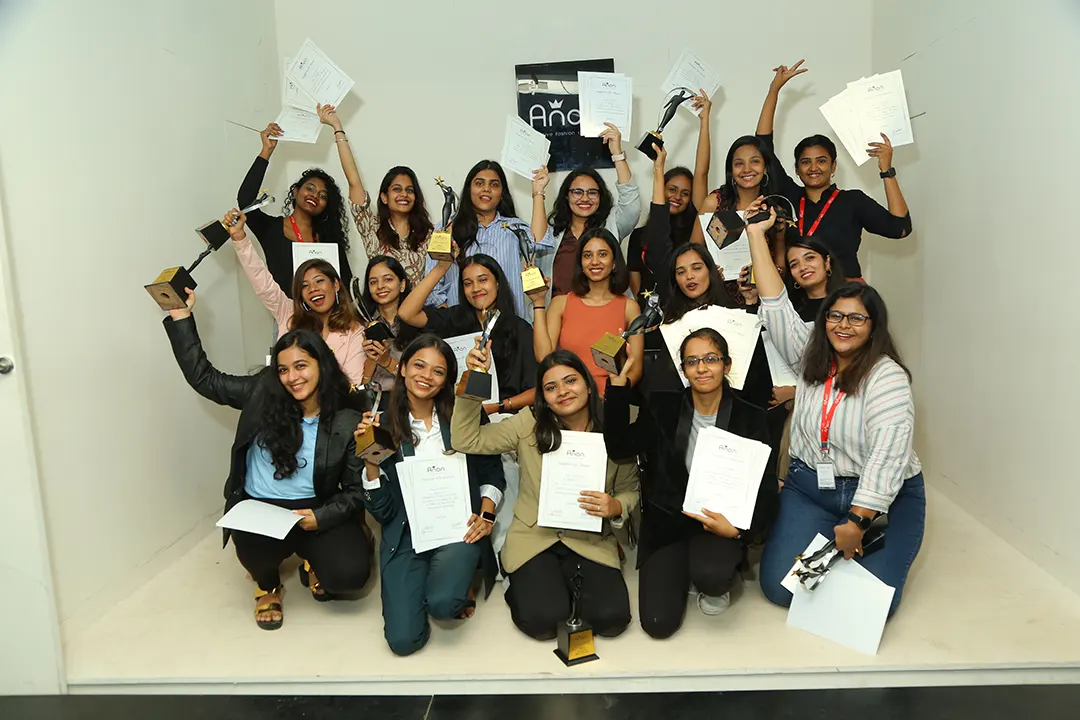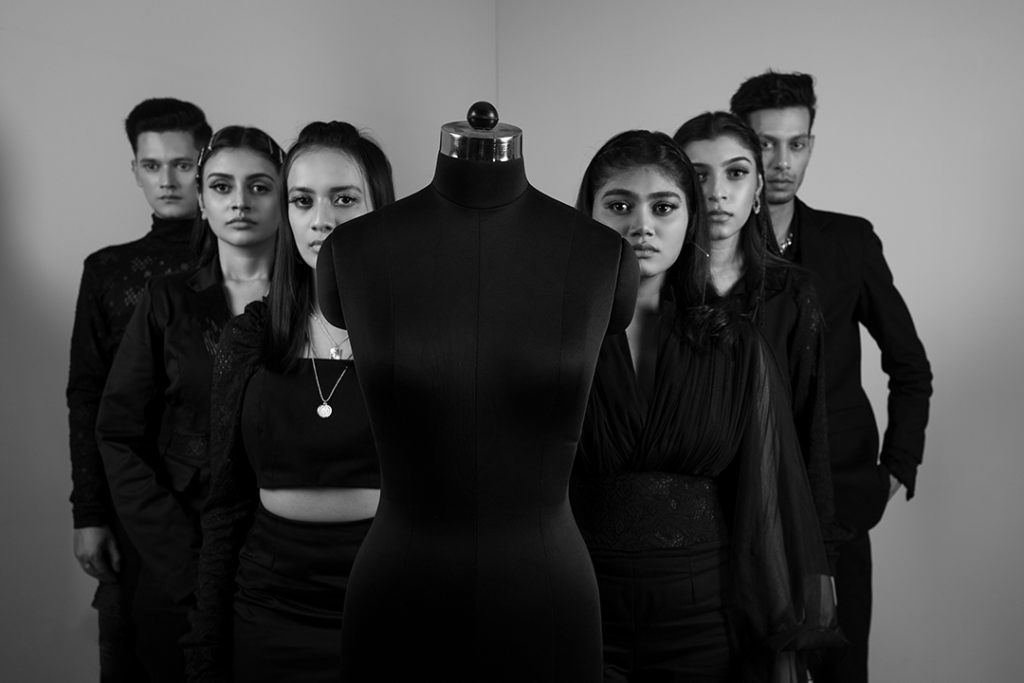Class Details
You’ll be seeing the detailed view of the short term courses which we offer here.
The syllabus we have is based on the fashion industry and current trends in the market
Design Collection
The conceptualization, creation, and presentation of a cohesive and avant-garde fashion collection are the main topics of the Design Collection in Fashion course. From the original inspiration to the finished showcase, students are taught the whole collection-creation process. This gives students the chance to express their creativity, hone their creative abilities, and obtain a thorough understanding of the fashion industry.
What You'll Learn
Process of collection
- Acquire innovative working methods in menswear and women’s wear design and brand development as well as in brand extension.
- Independently manage the creative process, channeling it into project development, in line with trends in the global fashion industry.
- Understand the use of existing and emerging software in order to work in a global context.
- Evaluate and manage niche brands and global companies.
- Independently develop research methodology to achieve success in fashion.
- Fashion Exploration
- Design Intentions
- Fashion Design,
- Development and Identity
- Research Methods
Product Development
A number of procedures go into the development of a fashion product in order to realize a design concept. It starts with market study and trend analysis, then moves on to design concept development. The product is then evaluated and improved upon using prototypes until it satisfies the required quality requirements. The product is subsequently produced, and lastly it is promoted and given to the intended market. Combining creative talent, technical proficiency, and business acumen are necessary for successful fashion product development.
What You'll Learn
Indian Traditional Garments For Women
- Basic Blouse
- Linning Insertion
- Pad Insertion
- Princes
- 3 Variations of Katori
- Round Neck
- Square Neck
- Sweetheart Neck
- Keyhole Neck
- Collar Neck
- Boat Neck
- Halter Neck
- Basic Sleeve
- Cap Sleeve
- BellSleeve
- Bottom Puff Variation
- Top Puff Variation
- Sleeveless
Mens Wear
The menswear fashion designer is a highly sought after professional in the world of fashion business management. The graduate can work for private labels or work alongside agencies, design studios or consulting agencies. The designer will be able to design garment collections, from woollens to bathing suits, with an eye for the latest evolutions in fashion design. Thanks to the skills they will acquire on the courses, they can work as product managers and manage production, which is a sector of vital importance for the development of fashion designs.
What You'll Learn
- Critically evaluate consumer needs as well as those of the market and trends for a specific menswear brand.
- Carry out extensive research in the context of art and design for the menswear fashion industry.
- Demonstrate the advanced technical and creative processes that are used to clearly and efficiently communicate a design concept, while reinforcing brand identity.
- Evaluate and critically apply the theories and techniques used in the development of new design proposals for the menswear fashion industry, demonstrating originality and self-management.
- successfully carry out independent research.
Course Themes
- Overview of men’s fashion industry and its evolution
- Understanding the cultural and social influences on men’s clothing
- Exploring different types of men’s garments and their characteristics
- Researching and analyzing current fashion trends in men’s wear
- Understanding the role of fashion forecasting in men’s fashion
- Identifying emerging trends and incorporating them into design concepts
- Understanding body proportions and fitting techniques for men’s clothing
- Exploring various silhouettes and their suitability for different body types
- Adapting and modifying patterns to achieve desired fit and aesthetics
- Exploring fabrics commonly used in men’s wear (e.g., cotton, wool, linen)
- Understanding fabric properties, textures, and finishes
- Selecting appropriate fabrics based on design requirements and garment functionality
- Understanding color psychology and its application in men’s fashion
- Exploring color harmonies and developing color palettes
- Applying color schemes to enhance design aesthetics and communicate brand identity
- Exploring design elements (e.g., line, shape, texture) and their application in men’s wear
- Understanding design principles (e.g., balance, proportion, emphasis) for creating cohesive designs
- Incorporating design details and accents to elevate the visual appeal of men’s clothing
- Basics of patternmaking for men’s garments (e.g., shirts, trousers, jackets)
- Understanding garment construction techniques specific to men’s wear
- Fitting, adjusting, and modifying patterns for optimal fit and comfort
- Exploring techniques for adding design details (e.g., pockets, collars, cuffs)
- Understanding the principles of men’s tailoring for a polished and refined finish
- Incorporating tailoring techniques to create well-structured and precise garments
- Creating a cohesive men’s wear collection
- Developing mood boards, storyboards, and design portfolios
- Presenting the collection through visual presentations and fashion showcases
- Understanding the target market and consumer preferences in men’s fashion
- Developing marketing strategies to promote men’s wear collections
- Exploring branding techniques and building a distinctive brand identity
Short term courses
Women's Wear Western
During the course participants will acquire the theoretical and technical knowledge to develop self-reliance and confidence in their creative and professional abilities. The knowledge of analysis, semantics and sociology will enable them to understand, interpret and implement proposals for current clothing in the womenswear market. This activity will become the launch-pad for the development of projects for industry, which is central to the master’s programme. During the course, participants will evaluate the market, specifically the relationship between the concept, the product and the sales methodology.
What You'll Learn
- Acquire innovative working methods in the womenswear design and brand development as well as in brand extension.
- Independently manage the creative process, channeling it into project development, in line with trends in the global fashion industry.
- Understand the use of existing and emerging software in order to work in a global context.
- Evaluate and manage niche brands and global companies.
- Independently develop research methodology to achieve success in fashion.
Course Themes
- Overview of women’s fashion in Western cultures
- Understanding the evolution and influence of Western fashion trends
- Exploring different types of women’s western garments and their characteristics
- Researching and analyzing current fashion trends in Western markets
- Understanding the role of fashion forecasting in women’s western wear
- Identifying emerging trends and incorporating them into design concepts
- Understanding body proportions and fitting techniques for women’s western wear
- Exploring various silhouettes and their suitability for different body types
- Adapting and modifying patterns to achieve desired fit and aesthetics
- Exploring fabrics commonly used in women’s western wear (e.g., cotton, denim, silk)
- Understanding fabric properties, textures, and finishes
- Selecting appropriate fabrics based on design requirements and garment functionality
- Understanding color psychology and its impact on women’s western wear
- Exploring color harmonies and developing color palettes
- Applying color schemes to enhance design aesthetics and communicate brand identity
- Exploring design elements (e.g., line, shape, texture) and their application in western fashion
- Understanding design principles (e.g., balance, proportion, emphasis) for creating cohesive designs
- Incorporating design details and accents to elevate the visual appeal of women’s western wear
- Basics of patternmaking for women’s western garments (e.g., tops, dresses, pants)
- Understanding garment construction techniques specific to western wear
- Fitting, adjusting, and modifying patterns for optimal fit and comfort
- Exploring techniques for adding design details (e.g., pleats, ruffles, cutouts)
- Incorporating embellishments (e.g., buttons, zippers, trims) to enhance garment aesthetics
- Understanding the balance between functional and decorative elements in western wear
- Creating a cohesive women’s western wear collection
- Developing mood boards, storyboards, and design portfolios
- Presenting the collection through visual presentations and fashion showcases
- Understanding the target market and consumer preferences in women’s western wear
- Developing marketing strategies to promote western wear collections
- Exploring branding techniques and building a distinctive brand identity
Fashion Photography
content
What You'll Learn
Styling and image composition
- Principles of Light in Fashion Photography
- Lighting Equipment and Light Shapers
- Backgrounds and Props to use in Fashion Photography
- Using Mood boards to create brief
- Looking at current Editorial styles and Images by renowned fashion
- Background
- Key
- Fill
- Hair
- Rembrandt and Paramount
- Butterfly
- Standard
- Studio Set – Ups
- With Model, Stylist and Hair / Make-up Artist
Illustration & Digital Art
The dissemination and consumption of fashion has been influenced by digital art. For designers and artists to present and sell their work, digital platforms and online markets have become crucial distribution avenues. As a result, the fashion business has become more accessible, giving up-and-coming designers and artists chances to achieve recognition and establish direct relationships with customers on a worldwide level.
What You'll Learn
The purpose of the course on digital art and illustration in fashion is to give students the abilities and knowledge to use digital tools and techniques in the context of fashion illustration and design. With a focus on how they might be used in the fashion industry, the course covers a variety of facets of digital art, such as drawing, rendering, and modification.
Facets of digital art / illustration
- Overview of digital art and its applications in the fashion industry
- Introduction to digital drawing tablets and software tools
- Understanding the benefits and advantages of digital art in fashion
- Mastering digital drawing tools and software ( Adobe Photoshop, Illustrator, ProCreate, Affinity)
- Exploring brush settings, layering, and blending techniques
- Developing digital sketching skills for fashion figures and garments
- Creating realistic fabric textures and patterns digitally
- Exploring shading and highlighting techniques for dimensional effects
- Enhancing digital illustrations with texture overlays and special effects
- Creating digital fashion design concepts and mood boards
- Combining digital images, textures, and illustrations to create collages
- Exploring composition and layout principles for effective visual storytelling
- Digitally creating repeating patterns for fabrics and textiles
- Exploring techniques for designing prints, motifs, and graphics
- Applying digital patterns and prints to fashion illustrations and garments
- Adapting traditional fashion illustration techniques to digital platforms
- Creating digital fashion illustrations for websites, social media, and digital marketing
- Exploring interactive and animated fashion illustrations
- Creating digital lookbooks, portfolios, and presentations for fashion collections
- Exploring multimedia tools and techniques for showcasing digital art in fashion
- Enhancing digital presentation skills and storytelling through visual media
- Understanding the role of digital art and illustration in the fashion industry
- Exploring career opportunities for digital artists and illustrators in fashion
- Navigating freelance work, collaborations, and entrepreneurial ventures in digital fashion art
Textile Printing
a contemporary take on the traditional technique of printing natural colors onto fabric. Use screen printing and cut-paper stencils to print in a sustainable manner. Beginners or experts who might need to update their abilities will find the course structure to be ideal. In order to help students screen-print and use natural dyes on a variety of fabrics, each session will include method demos.
What You'll Learn
Printing and Natural dyes
- Creating simple textile print designs
- Printing onto a variety of natural fabrics
- How to mix natural dyes for printing onto fabric
- Safe use of mordents, and their role in the natural printing workshop
- Low-Tech printing methods such as screen printing, cut-paper stencils
- Learn how to create natural dye prints that are wash-fast
- Low-Tech printing methods such as screen printing, cut-paper stencils
- Learn how to create natural dye prints that are wash-fast
- How to replicate specialised print studio techniques at home,or in a small workshop.
- Making natural dye print reference
- How to lay and prepare cloth for printing
- Designing and making a paper stencil to print
- Designing hand drawn artwork to make a thermofax screen
- Mixing, Printing and Fixing color using pigments and opaque, transparent and puff binders
- Embellishing your work through foiling, or flocking
Women's wear Ethinic
In the Women’s Ethnic Wear in Fashion course, the creation of traditional and modern ethnic clothes for women is the main topic. It gives students an in-depth grasp of the cultural relevance, design principles, and technical considerations involved in producing women’s ethnic clothing.
What You'll Learn
culturally sensitive designs
- Overview of women’s ethnic wear and its cultural significance
- Understanding the evolution of traditional and contemporary ethnic fashion
- Exploring different types of ethnic garments and their characteristics
- Researching and understanding various ethnic cultures and their fashion traditions
- Exploring motifs, patterns, colors, and embellishments specific to different regions
- Incorporating cultural influences into contemporary ethnic designs
- Analyzing and interpreting traditional silhouettes for modern designs
- Understanding body proportions and fit for women’s ethnic wear
- Experimenting with design variations and adaptations for different occasions
- Exploring fabrics commonly used in ethnic wear (e.g., silk, cotton, chiffon)
- Understanding the properties and characteristics of different fabrics
- Incorporating traditional and contemporary embellishments (e.g., embroidery, zari work, beadwork)
- Understanding the significance of color in ethnic fashion
- Exploring traditional color palettes and their cultural meanings
- Developing harmonious and innovative color schemes for ethnic designs
- Basics of patternmaking for women’s ethnic garments (e.g., sarees, salwar kameez, lehengas)
- Understanding drape and construction techniques for different silhouettes
- Fitting, adjusting, and altering patterns for optimal comfort and aesthetics
- Exploring design detailing techniques specific to ethnic wear
- Incorporating traditional and contemporary surface ornamentation methods
- Enhancing designs with trims, borders, and other decorative elements
- Creating a cohesive women’s ethnic wear collection
- Developing mood boards, storyboards, and design portfolios
- Presenting the collection through visual presentations and fashion shows
- Understanding the production process for women’s ethnic wear
- Collaborating with artisans, tailors, and craftsmen
- Ensuring quality control and overseeing the production of the collection
- Understanding the market for women’s ethnic wear
- Exploring retail and distribution channels for ethnic fashion
- Developing marketing strategies and building a brand identity
Embroidery
Students will learn about a number of hand embroidery techniques by the end of the first day, including ribbon-work, cut-work, shadow-work, and stump-work. By the end of the first day, students will be able to advance to more challenging techniques like French knots, which can be used to attach sequins, a whipped spiderweb, a woven spiderweb, and a needle-woven ribbon rose. These stitches include simple running stitches, laced running stitches, whipped running stitches, and back stitches.
What You'll Learn
Other Stiches
- Chain stitch, Blanket and Buttonhole stitch
- Daisy stitch, Stem stitch and Couching
- Cross stitch, Star stitch & Herringbone
- Reverse Herringbone for shadow-work
- Overcast stitch for Cut-work
- Ribbon stitch for silk ribbon flowers
- Long and short satin stitch and split stitch for thread painting
- Raised satin stitch for stump-work
- Fly stitch, feather and bullion stitch
Fashion Marketing
A career in the fashion sector can be started with the broad theoretical and practical foundation that fashion marketing offers. The curriculum places a strong emphasis on the creation and implementation of innovative marketing tactics in a fast-paced commercial and social context. You will gain knowledge of market and consumer needs, integrated marketing communications, social and digital fashion marketing, and business strategy development through industry-focused projects based on problem-solving.
What You'll Learn
Assesment methods
- Individual and group projects
- Essays
- Business reports
- Presentations
- Industry projects
- Dissertation
- Posters
- Film
- Artifact creation
Lingerie Collection
The goal of the Lingerie Collection Design and Development course is to give students a thorough understanding of the creative and technical processes involved in developing lingerie collections. This course covers every step of the process, from idea generation to final product execution, with an emphasis on both aesthetically pleasing and functional design factors.
What You'll Learn
Assesment methods
- Overview of the lingerie industry
- Understanding lingerie market trends and consumer preferences
- Exploring different types of lingerie garments and their purposes
- Researching the market and analysing trends
- The creation of a lingerie collection’s concept and theme
- Putting together inspiration and mood boards
- Understanding body proportions and silhouettes for lingerie
- Exploring fabric selection, trims, and embellishments
- Developing lingerie sketches and technical drawings
- Basics of patternmaking for lingerie garments
- Understanding bra and panty construction techniques
- Fitting and adjusting patterns for different body types
- Understanding different types of lingerie fabrics and their properties
- Exploring lace, mesh, silk, and other materials commonly used in lingerie
- Fabric sourcing and selection based on design requirements
- Creating a cohesive lingerie collection with a range of styles
- Developing color palettes and fabric combinations
- Exploring embellishment techniques, such as embroidery and appliqué
- Creating technical specification sheets for lingerie designs
- Understanding grading and sizing for lingerie garments
- Communicating design details to manufacturers or production teams
- Creating visual presentations and mood boards for the lingerie collection
- Developing promotional materials, such as lookbooks and catalogs
- Exploring marketing strategies for lingerie brands
- Staying updated with current lingerie industry trends and innovations
- Understanding ethical and sustainable practices in lingerie production
- Exploring career opportunities and pathways in the lingerie industry
Bridal Wear
The ladies’s Bridal Wear in Fashion course has an emphasis on the design, creation, and manufacture of elegant and opulent bridal wear for ladies. Students will leave the class with an in-depth understanding of bridal fashion trends, design concepts, and the technical abilities necessary for making outstanding bridal clothing.
What You'll Learn
Assesment methods
- Overview of bridal fashion industry and its significance in weddings
- Understanding the cultural and historical influences on bridal wear
- Exploring different types of bridal attire and their characteristics
- Researching and analyzing current bridal fashion trends
- Understanding the role of style forecasting in bridal wear
- Identifying emerging trends and incorporating them into design concepts
- Understanding body proportions and fitting techniques for bridal wear
- Exploring various silhouettes and their suitability for different body types
- Adapting and modifying patterns to achieve desired fit and aesthetics
- Exploring luxurious fabrics commonly used in bridal gowns (e.g., silk, lace, tulle)
- Understanding fabric properties, textures, and finishes for bridal wear
- Selecting appropriate fabrics based on design requirements and bridal gown style
- Exploring design elements (e.g., neckline, waistline, train) for bridal gowns
- Understanding design principles (e.g., balance, proportion, harmony) for creating stunning designs
- Incorporating design details and embellishments to enhance the beauty of bridal attire
- Mastering advanced sewing and construction techniques for bridal wear
- Understanding couture finishes, handwork, and intricate details
- Incorporating draping, pleating, and other couture techniques into bridal designs
- Exploring different styles and lengths of bridal veils
- Understanding the art of veil construction and embellishment
- Incorporating accessories such as headpieces, belts, and jewelry into bridal ensembles
- Creating a cohesive bridal wear collection
- Developing mood boards, storyboards, and design portfolios
- Presenting the collection through visual presentations and bridal showcases
- Understanding the process of bridal styling and client consultation
- Developing effective communication and consultation skills
- Collaborating with clients to understand their vision and preferences
- Exploring the bridal market and industry trends
- Developing marketing strategies to promote bridal wear collections
- Understanding the business aspects of running a bridal wear brand or boutique
Graduation




Have Any Question?
Don’t hesitate to ask us anything. We’ll answer your questions and help. We strive to give you the finest customer service. Your comments and support are appreciated.
We appreciate your selection!
- (044) 4740 9881
- +91 77083 88462
- Creative@anonacademy.com
